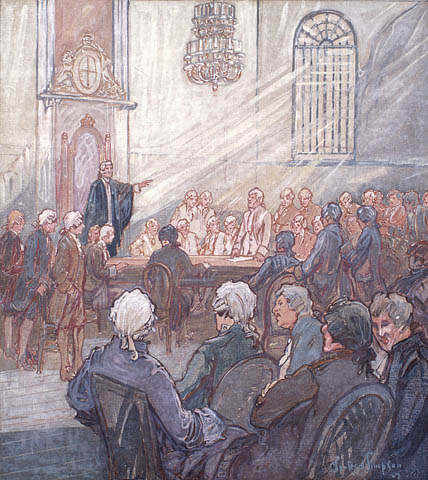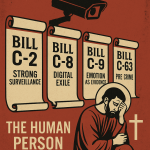One need not always write with broad appeal in mind, but any Canadian will know how limiting it can be to speak of problems that seem particular to the northernmost reaches of the Americas. Still, as a student of Canadian political institutions and history, I cannot help but feel the task of clarifying our own situation press upon me. Our institutions are not wholly unique, and others may recognize ripples of our difficulties within their own contexts. Some may regard what follows as only an irrelevant oddity of us Canucks, but I hope a bit of intellectual curiosity will make it worth reading even for those outside our borders.
As many will know, Canada held another federal election this year on April 28th, 2025. The Liberal Party secured a strong minority government, and they are likely to retain power per the usual election cycle. Yet throughout the campaign, one confusion became ever more apparent to me: our representative-based electoral system and our party-based Parliament operate on fundamentally opposed logics. This dissonance makes the act of voting nearly impossible to interpret coherently. The problem is hardly new; political scientists and politicians alike have noted it for decades. But for most Canadians who have little time to dwell on such things, the nature of the difficulty remains obscure. My aim here is simply to clarify this confusion and to render the problem visible.
I will offer no solutions—partly because many have already been suggested and partly because none are yet adequately justified. It is widely recognized that either our riding system or our party system must eventually expel the other if coherence is to be restored. What has been missing, however, is a convincing argument for why one should prevail over the other. That, I suspect, is a far greater theoretical question—one I will not even gesture toward here. Before we can hope to answer it, we must first understand the problem.
A riding is a geographic region allotted one seat in the House of Commons; in other systems, such regions may be called districts or constituencies. During an election, the people within the riding cast their ballots for the person they wish to represent them in Parliament, and the winner is the candidate who secures the plurality (meaning simply most, even if not a majority) of votes. Each candidate must reside within the riding (or at least maintain a residence there), and thus runs for a position that is (ostensibly) geographically connected to his or her daily life. From this alone, we can see the local and relational character of the system: it presumes that the people of a given riding are choosing someone they know and, more importantly, someone who knows them.
Today, however, each candidate’s political party affiliation appears on the ballot, allowing voters to select purely based upon party allegiance with no personal connection to the individual representative. This change has undeniably weakened the local focus that once animated the riding system. Yet it was not introduced without controversy, and the pushback itself reveals the logic of the riding model. Throughout much of the twentieth century, listing party affiliation on ballots was a contested practice; it was only standardized in 1972. Critics argued that the reform undermined the relational ideal of constituency representation. But this view ultimately gave way to another logic: that of the political party as the true generative model of national interests.
Political parties, in Canada and elsewhere, provide ideological narratives and organizational structures that consolidate the complex visions required to guide the actions of a modern state. To call them ideological is no insult; indeed, ideology is necessary if a party is to articulate a coherent account of what should be done for an entire country. An ideology is akin to a idiom or dialect of speech developed to render the complex activity of governance more easily comprehensible. Yet this simplification inherently results in a flattening tendency. The nation comes to be treated as a kind of monolith with little room for regional variation except where it can be subsumed into the project of building the nation as a whole—for instance, when one region’s resources are invoked as assets for national prosperity. (One could insert here the peculiarly bland “multiculturalism” that seems to persist in every major Canadian city no matter where—city-based cultures are becoming less and less distinctive from one another.)
In this sense, parties regard their members as belonging to nowhere in particular: to support the New Democratic platform means the same thing whether one lives in Grande Prairie, Alberta, or Kings–Hants, Nova Scotia. My claim is not that every representative thinks about their own party affiliation in this way but that such is the logic of the party form itself: it demands uniformity and solidarity with the party line. This demand becomes especially visible in the enforcement of party discipline, where Members of Parliament now vote in accordance with their party’s official position nearly all the time—the party line is broken, at most, in less than 1% of House votes. To be clear, this is a peculiarly Canadian problem. Other countries do not suffer from party discipline to the same degree, but the logic of party-influence would still hold in such instances.
These two logics—the relational and the ideological—cannot be reconciled as presently practiced in Canadian politics. If locality were given greater consideration, the very glue that binds together voting blocs in the House would disintegrate; conversely, we have seen how local considerations have taken a backseat to ideological agendas in recent decades—agendas that, at best, flatten the country into a monolith or, at worst, advance regional interests as if they were those of the whole nation (a longtime accusation that has been leveled against Ottawa, Ontario, and Eastern Canada more generally.)
One could argue that the problems here can be minimized by simply allowing more “conscience votes” (where candidates are expected to vote based not on party affiliation but their own views—ostensibly informed by their constituents). Parliamentarians as a whole could even delineate which kinds of issues would be subject to conscience and party discipline for future House sessions. Yet—even if such clarifying arrangements were established—voters would still face an impossible task: weighing which issues are likely to arise, how their candidate’s party leans on those issues subject to party discipline, and how the candidate’s personal views might influence conscience votes—three issues that may not align in coherent ways between candidates, parties, and regions. As just noted, however, this is not even the present situation faced by voters: currently, there is little conscience voting yet elections are still channeled through representatives with little clarity of their role. Voters are inherently disjunct from that which emerges from their votes.
More unfortunate is that much debate in recent decades about voting reform has not dealt with this central issue—indeed, I would go so far as to argue that this issue has gone entirely unattended. Reformers tend to be more concerned with the First-Past-the-Post system of voting that merely allows the candidate with the plurality (not majority) of votes to win his or her seat. Other forms of voting, like Rank Ballot or Multi-Round Voting, wind up merely making the constituents’ vote more decisive within their ridings (a not ignoble goal) without overcoming the tension between local candidacy and party control I have described. There also seems—on the other hand—to be a hesitancy to simply jump straight to a Proportional Representation system, as this brings up a number of questions about how candidates are selected at all. The sense of system responsiveness plummets. We therefore possess a system that is utterly incoherent and seemingly has no chance of being genuinely reformed—we wind up with the same problems or more profound ones.
What I am drawing attention to here is not yet a call for reform but just a recognition of the incoherence. The Canadian electoral system is not merely dysfunctional by accident; it is divided against itself in principle. The logic of ridings presumes a relationship between the people and a person—an embodied connection grounded in place and circumstance. The logic of party, by contrast, presumes that politics is best pursued through ideological organization, coherence, and national reach. Each logic has its own integrity, yet in practice each quietly subverts the other. The result is candidates running for office while communicating in two incommensurable registers at once and a public unsure of which one to heed.
Reformers often speak as though a better voting mechanism or a new formula of proportionality might restore legitimacy. But no technical adjustment can reconcile these two ways of imagining representation. The problem lies not in the machinery of elections but in the divided self-understanding of our representation. We are caught between the intimacy of the local and the abstraction of the national, between the neighbour and the platform. To clarify this tension is not to solve it—but to know we have such a problem is a step toward emergent solutions.
Quinton Peralta-Greenough is a Byzantine Catholic, husband and father residing in Toronto as he completes his PhD in political theory.




